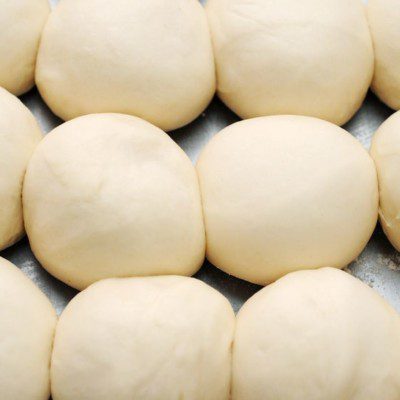Application
The dough pump is ideal for the high-speed production of:
- White pan bread
- Whole wheat pan bread
- Buns and rolls
- Pizza
- Tortillas
Then, the dough pump continuously delivers the dough according to the processing rate of the make-up stage. This is a critical adjustment to match the capacity of downstream equipment, and avoid unbalanced flows inside the line.
Common adjustments to dough pumps include:
- Pressure inside the conveying chamber or barrel
- Rotational speed of motor
- Torque of motor
- Flow rate or dough metering
By changing any of the mentioned variables above, the dough:
- May be run at a higher or lower speed
- May be subjected to increased or decreased shear and strain forces, resulting in varying rheological behavior and cell damage or distribution
Choosing the proper dough pump depends on several factors. The following are a few examples:
- Degree of process hygiene (closed or open equipment)
- Resistance of construction to cleaning solutions
- Flexibility of production line
- Conveying or mass flow required in the process (i.e., Kg or tons per hour)
- Nature of the upstream and downstream equipment (e.g., continuous mode production lines)
- Dough characteristics (e.g., hydration level, mechanical sensitivity)
Food safety and quality considerations
- The action of the augers in the dough pump homogenize and degasses the dough during transport, which results in a tighter crumb. Attention should be paid if such effects require compensation with longer proofing times.
- Either being an enclosed system or open equipment, dough pumps should allow for maintenance, inspection, cleaning and sanitation activities to be performed easily, adequately and quickly to reduce downtime.
- Dough temperature at the mixer and at the divider should require monitoring to determine how much temperature was added to the dough by the pumping equipment because of friction. A good adjustment could be aiming for a lower dough temperature after mixing to offset the extra heat gained through the conveying channel.1
- A dough pump should be properly designed, constructed and installed so as to preserve food safety. This is important since dough pickups on product-contact surface could cause cross-contamination if various types of bakery products (allergenic or gluten-free) are processed in the same line (shared line).
- Maintenance and lubrication of drive parts are essential to guarantee a smooth operation of the equipment.
- Hygienic aspects such as the possibility to clean the equipment without dismantling, i.e., CIP, should be considered when buying dough pumps. CIP cycles should be properly designed and run for a complete flushing of residual dough.
- Dusting flour and/or oiling equipment product-contact surfaces to manage wet and sticky doughs are possible options but care must be paid. Excess dusting may create cores in the crumb and streaks in the finished product. Dusting flour gets into the air and equipment, which must be cleaned. This causes waste and sanitation issues.2
References
- O’Donnell, K. “Equipment.” Bakery Production Handbook, Xlibris Publishing, 2016, pp. 242–290.
- AIB International. Bread Manufacturing Process, Distance Learning Course, “Part 2 Module 01 – Dividing.” https://www.aibonline.org/Start-Your-Training/Baking/Baking-Foundations/Bread-Manufacturing-Process-Online, 2018.

